
The Creativity Code: How AI Is Learning to Write, Paint and Think
by
Marcus Du Sautoy
Published 7 Mar 2019
The first game was one that experts could follow and appreciate why AlphaGo was playing the moves it was. They were moves a human champion would play. But as I watched game 2 on my laptop at home, something rather strange happened. Sedol played move 36 and then retired to the roof of the hotel for a cigarette break. While he was away, AlphaGo on move 37 instructed Huang, its human representative, to place a black stone on the line five steps in from the edge of the board. Everyone was shocked. The conventional wisdom is that during the early part of the game you play stones on the outer four lines. The third line builds up short-term territory strength on the edge of the board while playing on the fourth line contributes to your strength later in the game as you move into the centre of the board.
…
Beautiful. Beautiful.’ Beautiful and deadly it turned out to be. Not a mistake but an extraordinarily insightful move. Some fifty moves later, as the black and white stones fought over territory from the lower left-hand corner of the board, they found themselves creeping towards the black stone of move 37. It was joining up with this stone that gave AlphaGo the edge, allowing it to clock up its second win. AlphaGo 2 Humans 0. Sedol’s mood in the press conference that followed was notably different. ‘Yesterday I was surprised. But today I am speechless … I am in shock. I can admit that … the third game is not going to be easy for me.’
…
Seventy moves into the game, commentators were already beginning to see that AlphaGo had once again gained the upper hand. This was confirmed by a set of conservative moves that were AlphaGo’s signal that it had the lead. Sedol had to come up with something special if he was going to regain the momentum. If move 37 of game 2 was AlphaGo’s moment of creative genius, move 78 of game 4 was Sedol’s retort. He’d sat there for thirty minutes staring at the board, staring at defeat, when he suddenly placed a white stone in an unusual position, between two of AlphaGo’s black stones. Michael Redmond, who was commentating on the YouTube channel, spoke for everyone: ‘It took me by surprise.

Genius Makers: The Mavericks Who Brought A. I. To Google, Facebook, and the World
by
Cade Metz
Published 15 Mar 2021
Now, standing outside the commentary room on the seventh floor of the Four Seasons, in the few minutes following Move 37, he came to see the effect of this strange move. “It’s not a human move. I’ve never seen a human play this move,” he said. “So beautiful.” He kept repeating the word. Beautiful. Beautiful. Beautiful. The next morning, David Silver slipped into the control room, just so he could revisit the decisions AlphaGo made in choosing Move 37. In the midst of each game, drawing on its training with tens of millions of human moves, AlphaGo calculated the probability that a human would make a particular play. With Move 37, the probability was one in ten thousand.
…
Lee returned after several minutes and spent several more just staring at the board. In all, he took nearly fifteen minutes to respond, a huge chunk of the two hours he was allotted for play in the first phase of the game—and he never quite regained his footing. More than four hours later, he resigned. He was down two games to nil. Move 37 had also surprised Fan Hui, the man who had been so comprehensively beaten by the machine a few months earlier and who had since joined the DeepMind team to serve as AlphaGo’s sparring partner in the run-up to the match with Lee Sedol. He had never managed to beat DeepMind’s AI, but his encounters with AlphaGo had opened his eyes to new ways of playing.
…
The match revealed both the power of the technology and the fears that it would one day eclipse humanity, before reaching a moment of optimism, underscoring the often surprising ways the technology could push humanity to new heights. Even as Elon Musk warned of the dangers, it was a period of extreme promise for AI. After reading about the match, Jordi Ensign, a forty-five-year-old computer programmer from Florida, went out and got two tattoos. AlphaGo’s Move 37 was tattooed on the inside of her right arm—and Lee Sedol’s Move 78 was on the left. 11 EXPANSION “GEORGE WIPED OUT THE WHOLE FIELD WITHOUT EVEN KNOWING ITS NAME.” The Aravind Eye Hospital sits at the southern tip of India, in the middle of a sprawling, crowded, ancient city called Madurai.

Whiplash: How to Survive Our Faster Future
by
Joi Ito
and
Jeff Howe
Published 6 Dec 2016
At first Fan Hui, who was watching the game with Cade Metz, a writer for Wired magazine, was as befuddled as anyone else. “It’s not a human move,” he told Metz. “I’ve never seen a human play this move.” As Metz would later note,10 nothing in the 2,500 years of collected Go knowledge and understanding prepared anyone for move 37 of the second game in the series. Except Hui. Since losing to AlphaGo the previous fall Hui had spent hours helping the Google DeepMind team train the software for the match with Sedol, an experience that allowed him to understand how the move connected the black stones at the bottom of the board with the strategy AlphaGo was about to pursue.
…
This was not mere “tesuji”—a clever play that can put an opponent off guard. This was a work of aesthetic as well as strategic brilliance, possibly even a myoshu. Sedol continued to play nearly flawless Go, but it wasn’t enough to counter the striking creativity the DeepMind software displayed, even after move 37. By the end of the day the big news wasn’t that AlphaGo had won a second game, but that it had displayed such deeply human qualities—improvisation, creativity, even a kind of grace—in doing so. The machine, we learned, had a soul. A few weeks after the conclusion of the Humans vs. Machines Showdown, Demis Hassabis—one of the artificial intelligence researchers behind Google’s DeepMind—gave a talk at MIT to discuss the match, and how his team had developed AlphaGo.
…
Then, later, after playing an expert human, it made both the human and itself stronger as it continued to learn. In his talk Hassabis revealed breakthrough after breakthrough—some things researchers in the room had previously said they thought might be impossible. The excitement was palpable. He also showed images and videos from the rest of the match between AlphaGo and Lee Sedol. As it turned out, move 37 wasn’t the last dramatic moment of the match. After the second game Sedol had done his homework, developing a strategy based on known weaknesses of the Monte Carlo Tree Search algorithm. Sedol opened the third game by forcing a “ko fight,” in which one side removes its opponent’s stone, forcing him or her to retaliate or relinquish the initiative.

These Strange New Minds: How AI Learned to Talk and What It Means
by
Christopher Summerfield
Published 11 Mar 2025
The protein-folding problem is now widely considered to be solved. In 2016, another AI system built by DeepMind, AlphaGo, faced off against the human champion at the ancient board game Go and won by inventing a groundbreaking new style of play. Playing against Lee Sedol, the most storied player of the modern era, it came up with a manoeuvre (the famous ‘move 37’) so radical that Go commentators around the world were certain that it had blown a fuse. But the move led to a decisive victory for AlphaGo, and alerted humans to a whole new dimension of the game that nobody had grasped until that moment, despite experts poring over the mechanics of play for thousands of years.
…
Utopians everywhere are backing AI to gift us with new insights that will solve the most urgent global challenges, such as how to devise clean and reliable sources of energy, or help us organize our societies in ways that are both fair and prosperous. The more starry-eyed members of the AI community are waiting with bated breath for a version of ‘move 37’ that occurs not in the tightly constrained world of the Go board but in language itself – the vast open-ended system of meaning that expresses everything people know about every topic under the sun. Within AI research, the attempt to build machines with language is as old as the discipline itself.
…
.: ‘The Next Decade in AI’, 51 Mata, Roberto, 194, 196 McCulloch, Warren, 35; ‘A Logical Calculus of the Ideas Immanent in Nervous Activity’, 35–6, 37, 39 memory computer storage, 22, 28, 30, 76 continual learning and, 253 Korsakoff syndrome and, 194–5 LaMDA and, 124 limited memory of present-day LLMs, 250, 254–6, 257, 333, 334, 338 Long Short-Term Memory network (LSTM), 99, 116 one-shot learning and, 253–4 RNNs and, 98 semantic memory, 88–9, 92, 95, 114, 279 short-term memory, 98, 99, 116 Met Office, 96, 105, 290 Meta, 213, 221, 261, 311, 317 meta-learning, 158, 159, 160–61, 268, 270 Metasploit, 319 Metropolis, 220 Mettrie, Julien Offray de La: L’Homme Machine, 32 Micro-Planner, 77 military AI, 313, 314–16 mind blank slate, infant mind as, 16, 38, 42 brain and, 32–3, 129–30 defined/term, 130 mechanical models of, 143–4 problem of other minds, 123 MiniWoB++, 293–4 Minsky, Marvin, 1–2, 17, 19, 38, 43 misinformation, 8, 51, 145, 181–4, 197, 198, 219, 223, 232, 263, 337 mode collapse, 212 Moore’s Law, 29, 305 Mosteller, Frederick, 80–81 move, 37, 4, 5 multi-hop reasoning problems, 269 multimodal AI, 177, 230, 242 Musk, Elon, 210, 307, 321 N n-grams, 83–4, 85n, 87–9, 92, 102, 112 National Library of Thailand thought experiment, 171–2, 174 natural language processing (NLP), 50, 310 Chomskyan linguistics and, see Chomsky, Noam crosswords and, 276 defined, 58–9 ELIZA and evolution of, 60, 70–72, 78, 81 ENGROB and evolution of, 75–6 evolution of, 58–117 language, definition of and, 4, 59, 60–68 n-grams and, see n-grams perplexity and, 84–5, 92, 126, 134, 166 recurrent neural networks (RNNs) and, 98–101, 103, 105, 106, 108 semantic memory and, 88–9, 92, 95, 114, 279 sequence-to-sequence (or seq2seq) network, 98–102, 104–6, 110, 112, 116 SHRDLU and evolution of, 76–8 statistical modelling in, 79–86, 101, 110, 112, 308 transformer and, 104–111 natural selection, theory of, 128, 164 Neam Chimpsky (Nim), 65–7, 72, 78, 113 neocortex, 116, 256 Neural Information Processing Systems (NeurIPS), 104 Neural Machine Translation (NMT), 49, 50, 98n neural network, 3–4, 19, 31, 45, 254, 256, 267, 274, 279, 283, 332 consciousness and, 122, 123–6, 131, 234, 260 deep neural network, see deep neural network double descent and, 49 feature vector and, 92–3 function of, 116 generalization and, 43–4 language models based on neural networks dominate NLP, 97–8 LLMs, see large language models (LLMs) Neural Machine Translation (NMT) and, 49–50 novelty and, 41–2 origins of, 32–9, 47 overfitting, 48, 49 recurrent neural networks (RNNs), 98–101, 103, 105, 106, 108 semantic memory and, 90–95 training from human evaluators, 51–2 transformer and, see transformer Turing Test and, 59 See also individual neural network name neurons, 31, 33, 34, 35–8, 47, 125, 130, 144, 147, 161–2, 254, 299 Newell, Alan, 26, 27, 29, 53, 274 NotebookLM, 342–3 ‘nudify’ sites, 345 O Occam’s Razor, 48, 49 Ochs, Nola, 253 ontology, 29 OpenAI, 1, 5, 51, 122, 162, 187, 187n, 188, 208, 210, 215, 222–3, 235, 237, 242, 245, 251, 257, 262, 285, 290, 295–6, 340, 341, 342 open-ended problems/environments, 273–4, 283, 288, 297, 298, 299, 320, 333 open-source LLMs, 212–13, 290, 294–5, 317 opinions, LLMs and, 132, 134, 207–16, 237 Ord, Toby: The Precipice, 312 overfitting, 48, 49 Owen, Richard, 128, 138, 334 P Page, Larry, 76, 321 Palantir, 315 Paley, William, 163, 164 Palm 540B, 293 Pandas, 284 Patron Saints of Techno-Optimism, 306–7 Pause AI letter, 310–11 perceptron, 37–9, 42, 43, 47 perlocutionary acts, 218–19, 224 perplexity, 84–5, 92, 126, 134, 166 personal assistant (PA), 7, 227–8, 243, 246–7, 251, 263, 272, 292, 295, 297, 300, 301, 332, 334, 335, 342–3 personalization, 245–64, 329–30, 332, 334, 335 perils of, 259–64 persuasion, rational, 218–24, 236 phenomenal states, 122, 123 phone, 6, 11, 39, 41, 47, 52–3, 81, 133, 220–21, 242, 245, 246, 282–3, 337 Pi, 252, 258 Pitts, Walter, 35; ‘A Logical Calculus of the Ideas Immanent in Nervous Activity’, 35–6, 37, 39 Planner-Actor-Reporter framework, 319 planning problems, 272–81 Plato, 16 Podesta, John, 181, 182 ‘poverty of the stimulus’ argument, 67, 113 predicate logic/first-order logic, 24–31, 75, 77, 168–9 prediction, 4, 97, 148–62 deep learning and, 42–52 difficulty of, 96–7, 241 digital personalization and, 250, 251, 256, 263, 266, 270 ethics of LLMs and, 183, 189, 190, 198, 200, 204–5, 213, 214–15 feature-vector and, 92 generating text and, 81–4 intentional states and, 132, 134 language models and, 97–8 n-gram models and, 87–8 RNNs, 98–101 seq2seq model and, 104–5 thinking and, 52 thinking, possibility of LLM and, 148–9, 152, 155–62, 163–6, 172, 173, 178, 333–4 prefrontal cortex (PFC), 298–300 probabilistic systems, 80, 84, 142, 150, 162, 334 program-aided language modelling (PAL), 284–5 programming languages, 24–31, 77, 146.
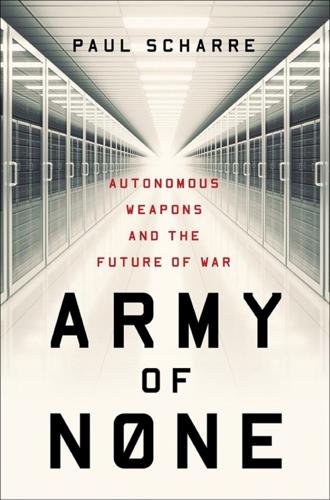
Army of None: Autonomous Weapons and the Future of War
by
Paul Scharre
Published 23 Apr 2018
Connecticut teenager: Rick Stella, “Update: FAA Launches Investigation into Teenager’s Gun-Wielding Drone Video,” Digital Trends, July 22, 2015, https://www.digitaltrends.com/cool-tech/man-illegally-straps-handgun-to-a-drone/. 119 For under $500: “Spark,” DJI.com. 122 Shield AI: “Shield AI,” http://shieldai.com/ 122 grant from the U.S. military: Mark Prigg, “Special Forces developing ‘AI in the sky’ drones that can create 3D maps of enemy lairs: Pentagon reveals $1m secretive ‘autonomous tactical airborne drone’ project,” DailyMail.com, http://www.dailymail.co.uk/sciencetech/article-3776601/Special-Forces-developing-AI-sky-drones-create-3D-maps-enemy-lairs-Pentagon-reveals-1m-secretive-autonomous-tactical-airborne-drone-project.html. 123 “Robotics and artificial intelligence are”: Brandon Tseng, email to author, June 17, 2016. 124 “fully automated combat module”: “Kalashnikov Gunmaker Develops Combat Module based on Artificial Intelligence.” 125 more possible positions in go: “AlphaGo,” DeepMind, accessed June 7, 2017, https://deepmind.com/research/alphago/. 125 “Our goal is to beat the best human players”: “AlphaGo: Using Machine Learning to Master the Ancient Game of Go,” Google, January 27, 2016, http://blog.google:443/topics/machine-learning/alphago-machine-learning-game-go/. 126 game 2, on move 37: Daniel Estrada, “Move 37!! Lee Sedol vs AlphaGo Match 2” video, https://www.youtube.com/watch?v=JNrXgpSEEIE. 126 “I thought it was a mistake”: Ibid. 126 “It’s not a human move”: Cade Metz, “The Sadness and Beauty of Watching Google’s AI Play Go,” WIRED, March 11, 2016, https://www.wired.com/2016/03/sadness-beauty-watching-googles-ai-play-go/. 126 1 in 10,000: Cade Metz, “In Two Moves, AlphaGo and Lee Sedol Redefined the Future,” WIRED, accessed June 7, 2017, https://www.wired.com/2016/03/two-moves-alphago-lee-sedol-redefined-future/. 126 “I kind of felt powerless”: Moyer, “How Google’s AlphaGo Beat a Go World Champion.” 126 “AlphaGo isn’t just an ‘expert’ system”: “AlphaGo,” January 27, 2016. 127 AlphaGo Zero: “AlphaGo Zero: Learning from Scratch,” DeepMind, accessed October 22, 2017, https://deepmind.com/blog/alphago=zero=learning=scratch/. 127 neural network to play Atari games: Volodymyr Mnih et al., “Human-Level Control through Deep Reinforcement Learning,” Nature 518, no. 7540 (February 26, 2015): 529–33. 127 deep neural network: JASON, “Perspectives on Research in Artificial Intelligence and Artificial General Intelligence Relevant to DoD.” 129 Inception-v3: Inception-v3 is trained for the Large Scale Visual Recognition Challenge (LSVRC) using the 2012 data.
…
AlphaGo used the 30 million human games of go as a starting point, but by playing against itself could reach levels of game play beyond even the best human players. This superhuman game play was demonstrated in the 4–1 victory AlphaGo delivered over the world’s top-ranked human go player, Lee Sedol, in March 2016. AlphaGo won the first game solidly, but in game 2 demonstrated its virtuosity. Partway through game 2, on move 37, AlphaGo made a move so surprising, so un-human, that it stunned professional players watching the match. Seemingly ignoring a contest between white and black stones that was under way in one corner of the board, AlphaGo played a black stone far away in a nearly empty part of the board. It was a surprising move not seen in professional games, so much so that one commentator remarked, “I thought it was a mistake.”

I, Warbot: The Dawn of Artificially Intelligent Conflict
by
Kenneth Payne
Published 16 Jun 2021
In deposing Lee Sedol, the world champion, AlphaGo’s limited version of creativity overwhelmed the richer human variety.5 Go was a formidable computer science problem, but still just a board game. Nonetheless, when all was done and Sedol defeated, the match clarified some big things that have relevance for our study of AI strategists. Chief among these was confirmation that if AI is creative, its creativity differs from what we usually mean by it. At move 37 in game 2, the computer stunned onlookers and Sedol by making a radical move, one vanishingly unlikely to have been played by an expert human. There were gasps from the commentators and a startled Sedol left the table to ponder his reply. It was a game-winning move, which aficionados eagerly attributed to AlphaGo’s ingenuity, or creativity.
…
It may make startling moves that appear bolder, or more risk tolerant than a human would make. Would human strategists working with the machine go along with that? The stakes in war would be rather higher than those facing the human part of the centaur chess team. If the machine says to do something whacky, like AlphaGo did in move 37, would you go along with its judgment? You might think twice, especially now you know about its tactical brilliance and strategic naivety. Conflicting human tendencies may ensue. On one hand, there is the tendency in some circumstances overly to trust the product of machine intelligence: psychologists refer to ‘automation bias’.
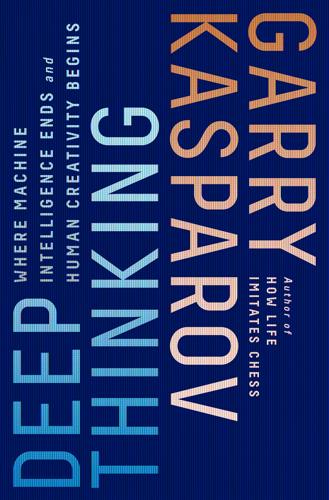
Deep Thinking: Where Machine Intelligence Ends and Human Creativity Begins
by
Garry Kasparov
Published 1 May 2017
The moves in game two that left me with a lost position and crushed morale were unique only for the time. Within five years, commercial engines running on standard Intel servers could reproduce all of Deep Blue’s best moves, even improving on some of the “humanlike” moves that so impressed me and everyone else at the time. The engine on my laptop today slightly favors the “shockingly humanlike” move 37.Be4 from game two in less than ten seconds, although it rates it nearly equal to the queen sortie I had expected because 37.Be4 turns out not to have been as superior as we all believed at the time. Had I played better defense instead of collapsing and resigning, game two would have been considered a very impressive game for a machine but nothing more, no matter the eventual result.
…
IBM took this as a warning that I might not appear either if Thompson didn’t, and they warned the media that there might not be a game that day. Thirty minutes before the game started, we got a message from Newborn saying that the printouts had been given to the Appeals Board, but when we arrived at the thirty-fifth floor, Thompson said that they were only for one move, 37.Qb6. Without the other moves to show context, this was useless. This secretive and antagonistic behavior manifested in other ways as well, as reported in the New York Times after game five: “One reporter, Jeff Kisseloff, who had been hired by IBM to report on the Kasparov team for the match Web site, lost his reporting privileges after he included damning comments about Deep Blue from the champion’s supporters in his report.
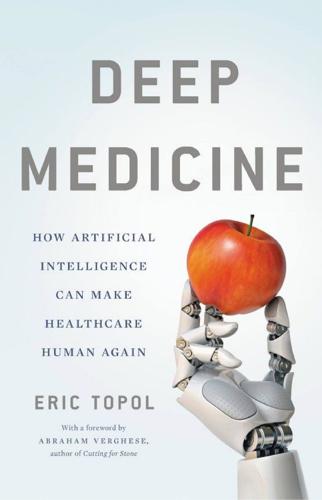
Deep Medicine: How Artificial Intelligence Can Make Healthcare Human Again
by
Eric Topol
Published 1 Jan 2019
That number, however, is vastly exceeded by the number of possible Go positions—there are about 2.081681994 × 10170, which is two hundred quinquinquagintillion—and vastly more than the number of atoms in the universe, which helps explain why it was a much more interesting challenge than a game like checkers or chess.29 Go has been played for at least 3,000 years, and the game’s experts had predicted in 2015 that it would be at least another decade before AI could win. It took combining DNN (supervised and reinforcement learning) with GOFAI, in the latter case a Monte Carlo tree search.30 The key winning move (move 37), as it turned out, was viewed as highly creative—despite the fact that a machine made it—and perhaps more importantly, it was made in defiance of human wisdom.31 That was certainly a monumental AI achievement for such a remarkably complex and ancient game. But it didn’t take long before even that achievement was superseded.
…
Further, the majority of medical studies published to date are retrospective, performed in silico, yet to be prospectively validated in a real-world, clinical setting. BLACK BOXES If there’s one thing that the human brain and AI certainly share, it’s opacity. Much of a neural network’s learning ability is poorly understood, and we don’t have a way to interrogate an AI system to figure out how it reached its output. Move 37 in the historic AlphaGo match against Lee Sodol is a case in point: the creators of the algorithm can’t explain how it happened. The same phenomenon comes up in medical AI. One example is the capacity for deep learning to match the diagnostic capacities of a team of twenty-one board-certified dermatologists in classifying skin lesions as cancerous or benign.
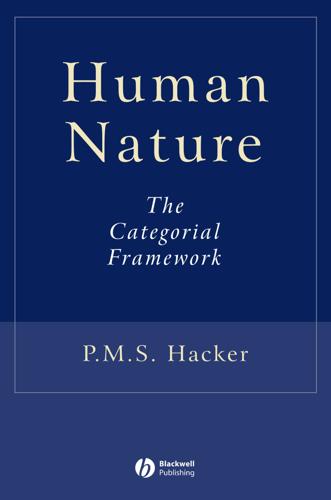
Human Nature: The Categorial Framework
by
P. M. S. Hacker
Published 19 Aug 2007
But it is altogether obscure what is meant by causing one’s arm to move without doing anything to make it move. In general, for a volitional agent to cause something to move is to spin 36 L. Wittgenstein, Philosophical Investigations, §§618, 620. HNC05 25/04/2007 02:09PM Page 155 Agency 155 or rotate it, to push, pull or throw it, as a consequence of which it moves.37 It is indeed to make it move (wobble, rotate, rise or fall, roll or slide, etc.) by acting on it. To make another thing move is to bring it about that it moves. But when we move our eyes, grimace (smile or scowl), move our limbs, rotate our body, nod or shake our head, wiggle our toes or fingers, when we turn over or turn round, when we walk or run, when we talk or laugh, we do not cause our limbs, features, or ourselves to move.
…
When I nod my head in assent, I don’t make my head nod or bring it about that my head nods – that I do when I seize it in my hands and move it up and down.38 When I move, or move my limbs, voluntarily, I don’t act on myself or on my limbs – I don’t do something to myself. My body, the body I have (see ch. 9), is not the reflexive patient on which I act. I am a body, a living spatio-temporal continuant of a certain kind; but when I move, I don’t move myself, I just move. 37 Note that to pick something up and put it down elsewhere, to carry something from one place to another, is not to make it move, but merely to move it – to bring about a change in its location. To hit a billiard ball with a cue, on the other hand, will make the ball move (cause it to move). 38 If I raise my head, does my head rise?

Coders: The Making of a New Tribe and the Remaking of the World
by
Clive Thompson
Published 26 Mar 2019
In the second game against Sedol, during move 37, AlphaGo made a play that at first flummoxed the Go experts who observed the game, as Wired reported. The computer abandoned one group of stones, shifting its play to an entirely different part of the board. “That’s a very surprising move,” as one Go expert observed. “I thought it was a mistake,” said another. But after pondering the strategy, it hit them: Oh my God, that’s a gorgeous move! “So beautiful,” cooed Fan Hui, who was watching, fresh from his own AlphaGo defeat. “It’s not a human move. I’ve never seen a human play this move.” When AlphaGo made move 37, Sedol himself appeared stunned.

Nexus: A Brief History of Information Networks From the Stone Age to AI
by
Yuval Noah Harari
Published 9 Sep 2024
As we watched from our control room, the tension was unreal. Yet as the endgame approached, that ‘mistaken’ move proved pivotal. AlphaGo won again. Go strategy was being rewritten before our eyes. Our AI had uncovered ideas that hadn’t occurred to the most brilliant players in thousands of years.”34 Move 37 is an emblem of the AI revolution for two reasons. First, it demonstrated the alien nature of AI. In East Asia go is considered much more than a game: it is a treasured cultural tradition. Alongside calligraphy, painting, and music, go has been one of the four arts that every refined person was expected to know.
…
Yet during all those millennia, human minds have explored only certain areas in the landscape of go. Other areas were left untouched, because human minds just didn’t think to venture there. AI, being free from the limitations of human minds, discovered and explored these previously hidden areas.35 Second, move 37 demonstrated the unfathomability of AI. Even after AlphaGo played it to achieve victory, Suleyman and his team couldn’t explain how AlphaGo decided to play it. Even if a court had ordered DeepMind to provide Lee Sedol with an explanation, nobody could fulfill that order. Suleyman writes, “Us humans face a novel challenge: will new inventions be beyond our grasp?

Smart Mobs: The Next Social Revolution
by
Howard Rheingold
Published 24 Dec 2011
He ran fourteen entries against each other and against a random rule, over and over. “To my considerable surprise,” Axelrod reported, “the winner was the simplest of all the programs submitted, TIT FOR TAT. TIT FOR TAT is merely the strategy of starting with cooperation and thereafter doing what the other player did on the previous move.”37 If the opponent cooperates on the first move, then TIT FOR TAT cooperates on the next move; if the opponent defects on the first move, then TIT FOR TAT defects on the next move. If the opponent switches from defection to cooperation, TIT FOR TAT switches from defection to cooperation on the following move, punishing the opponent but forgiving it.

Robert's Rules of Order Newly Revised, 12th Edition
by
Henry M. Robert Iii
,
Daniel H. Honemann
and
Thomas J. Balch
Published 24 Aug 2020
) † Amend or Rescind adopted special rules of order (2:22; 35), previous notice also being required † Amend or Rescind Something Previously Adopted (general case, including ordinary standing rules), when previous notice has not been given (35) Amend or Rescind Something Previously Adopted, in a committee when someone who voted for the motion to be rescinded or amended is absent and has not been notified of the motion to Amend or Rescind (35) Authorize a motion outside society’s object (10:26(2)) Close nominations (31) Close the polls (30) † Discharge a Committee, if previous notice, or a partial report, has not been given (36) Expel from membership, notice and a trial being also required unless the offense is committed in a meeting of the assembly (61) Extend time for consideration of pending question (18), or time until scheduled adjournment or recess (20, 21) Limit or Extend Limits of Debate (15) Make a special order (14, 41) Objection to the Consideration of a Question (26) (two-thirds against consideration sustains the objection) † Order the reading of a subordinate board’s minutes, when previous notice has not been given (49:17–19) Previous Question (16) Reconsider in committee, when someone who voted with the prevailing side is absent and has not been notified that the reconsideration will be moved (37:35) Refuse to proceed to the orders of the day (18) † Remove from office where trial is not required (see 62:16), and previous notice has not been given Suspend the Rules (25) Take up a question out of its proper order, or take up an order of the day before the time for which it has been set (14:11; 25; 41) VII.
…
See debate. discussion without a pending motion, 4:7–8, 43:31–34 of bylaw amendment for which notice is being given, 57:14 explaining a vote, 45:7 Good of the Order, General Good and Welfare, or Open Forum, 41:34 at mass meeting, 53:19 organizing a society, 54:5–7, 54:9 Reconsider, to urge moving, 37:10(a) Request for Any Other Privilege to permit, 33:22 small-board rules, 49:21 disorderly members and guests. See breaches of order; call member to order; disciplinary procedures; nonmembers. dispense with a ballot vote, 56:26 dispense with the reading of the minutes, 48:11 dispense with the regular order of business, 25:12 disposed of.

The Health Gap: The Challenge of an Unequal World
by
Michael Marmot
Published 9 Sep 2015
One study, among many, examined the population of England and showed that people living near green space had better mental health and greater well-being than those with poorer access.36 The effect was not enormous, about a tenth of the positive effect from being employed compared with unemployed, but it was worth having. In later research these same investigators showed that moving to a greener area enhanced mental health, whereas the very thought of going the other way seemed to suffice to lessen mental health – it got worse before those destined to go to more built-up areas made the move.37 If the thought occurred that ‘I’m just dying for a bit of green space’, it may well be true. Lack of access to urban green space may make a contribution to the social gradient in deaths from heart disease.38 Richard Mitchell in Glasgow and Frank Popham at St Andrews in Scotland have conducted research that addresses whether access to green space might be protective against the negative impact on health of low income.

The Coming Wave: Technology, Power, and the Twenty-First Century's Greatest Dilemma
by
Mustafa Suleyman
Published 4 Sep 2023
In this paradigm, there is no need for a human to laboriously define the manner in which a task should take place. Instead, we just specify a high-level goal and rely on a machine to figure out the optimal way of getting there. Keeping humans “in the loop,” as the saying goes, is desirable, but optional. Nobody told AlphaGo that move 37 was a good idea. It discovered this insight largely on its own. It was precisely this feature that struck me so forcibly watching DQN play Breakout. Given some clearly specified objective, systems now exist that can find their own strategies to be effective. AlphaGo and DQN were not in themselves autonomous.

Class Acts: Service and Inequality in Luxury Hotels
by
Rachel Sherman
Published 18 Dec 2006
She joked, “I’m going to call the door when it’s busy in here and tell him I need some help at the desk.” In order to avoid managerial reprimands, workers in one area sometimes took actions that interfered with other workers’ games. For example, Zeke complained that front desk workers asked bellmen to bring guests’ bags to their rooms when the guests were not there (what was known as a “dead move”).37 He said, “If a bellman brings up bags to an empty room, he makes no money.” Later, I asked Jackie at the front desk if she usually sent up the bags to the empty room, and she said, “Yes, just to get them out of the way.” I mentioned that the bellmen did not receive a tip for the “dead move,” and she said, “Well, I can’t always look out for the bellmen.”

The Ice at the End of the World: An Epic Journey Into Greenland's Buried Past and Our Perilous Future
by
Jon Gertner
Published 10 Jun 2019
In the United States, meanwhile, glaciology was an arcane practice as well as an arcane word—a little-known extension of geology that one journalist noted was “a rare branch of learning which attracts only the most hardy intellectuals.”36 Mainly, the early glaciologists in the United States were either focused on measuring the glaciers of Alaska and the Pacific Northwest or were intent on trying to work out a theoretical framework for how and why these large masses of ice move.37 But in sum, there were very few of them. “Glaciology was something that if you wanted to do it, nobody understood why you wanted to do it,” recalls one scientist of the era.38 By an accident of history, Bader found himself to be in the right scientific field, in the right country, at the right time.
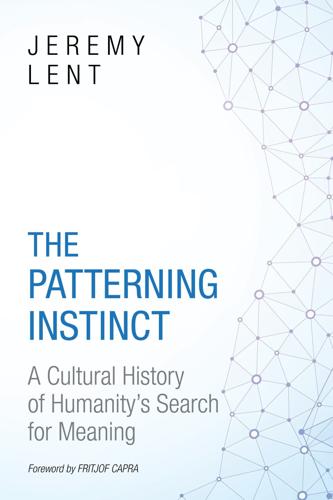
The Patterning Instinct: A Cultural History of Humanity's Search for Meaning
by
Jeremy Lent
Published 22 May 2017
The issue was rather one of due process and, above all, maintenance of the church's authority in interpreting scriptures. If the church had to change its official position about something as fundamental as the position of the earth in the heavens, the authorities needed to make sure it was well founded before taking such a drastic move.37 Galileo was well aware of church policy. He had been told by a cardinal that the Bible should be interpreted literally except for passages where there was a “compelling necessity” to view its content as merely metaphorical. Was there, then, a “compelling necessity” for the Catholic Church to change its view of the solar system in the early seventeenth century?

Artificial Intelligence: A Modern Approach
by
Stuart Russell
and
Peter Norvig
Published 14 Jul 2019
Book cover The cover depicts the final position from the decisive game 6 of the 1997 chess match in which the program Deep Blue defeated Garry Kasparov (playing Black), making this the first time a computer had beaten a world champion in a chess match. Kasparov is shown at the top. To his right is a pivotal position from the second game of the historic Go match between former world champion Lee Sedol and DeepMind’s ALPHAG Oprogram. Move 37 by ALPHAG Oviolated centuries of Go orthodoxy and was immediately seen by human experts as an embarrassing mistake, but it turned out to be a winning move. At top left is an Atlas humanoid robot built by Boston Dynamics. A depiction of a self-driving car sensing its environment appears between Ada Lovelace, the world’s first computer programmer, and Alan Turing, whose fundamental work defined artificial intelligence.